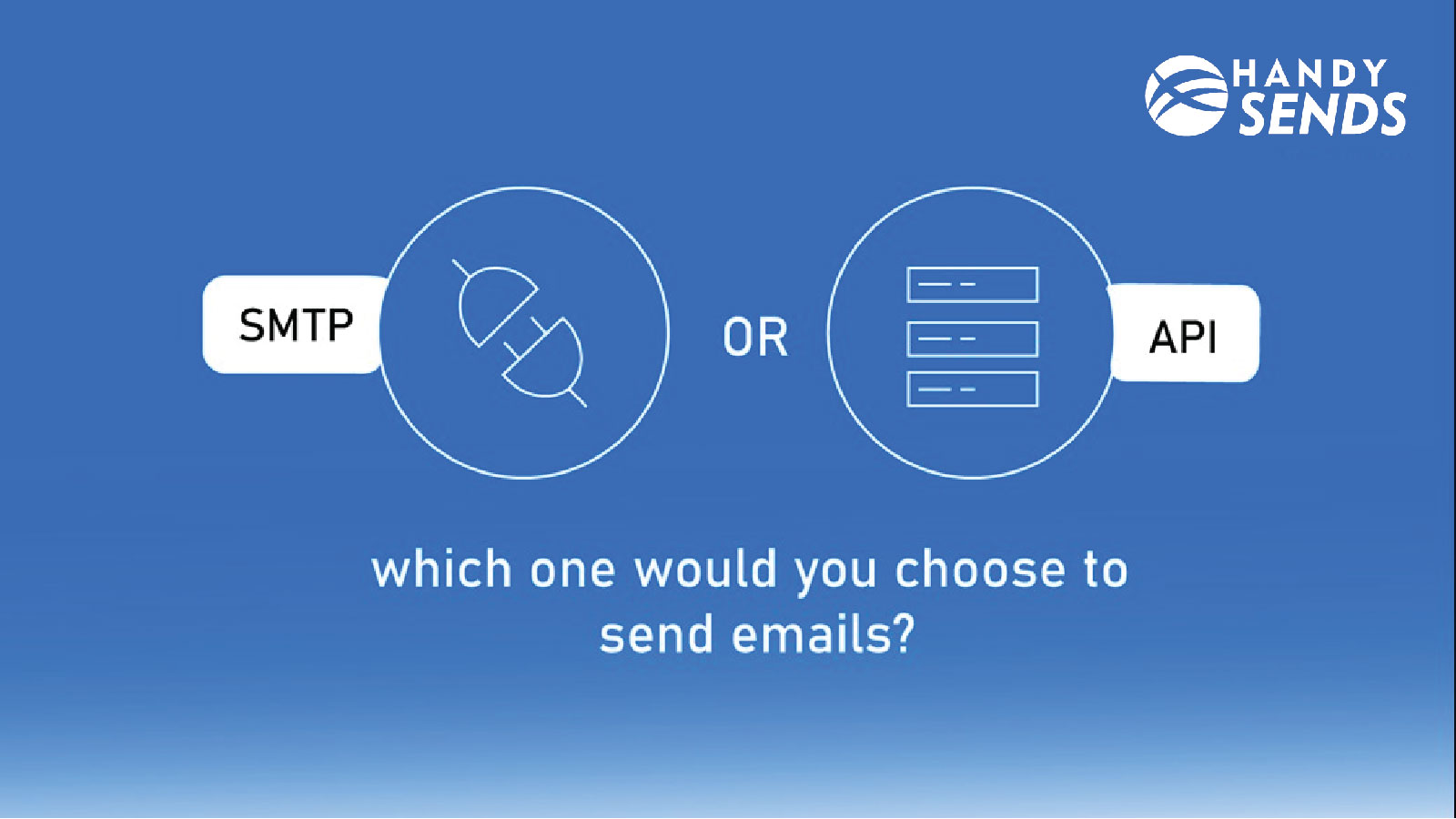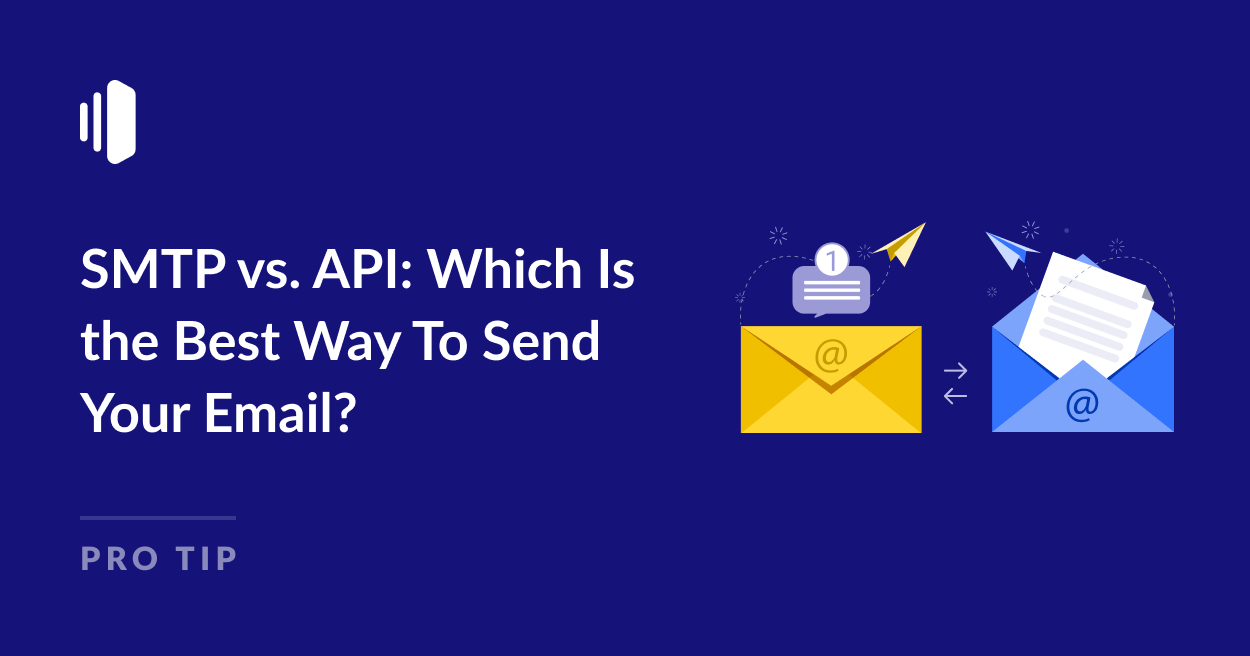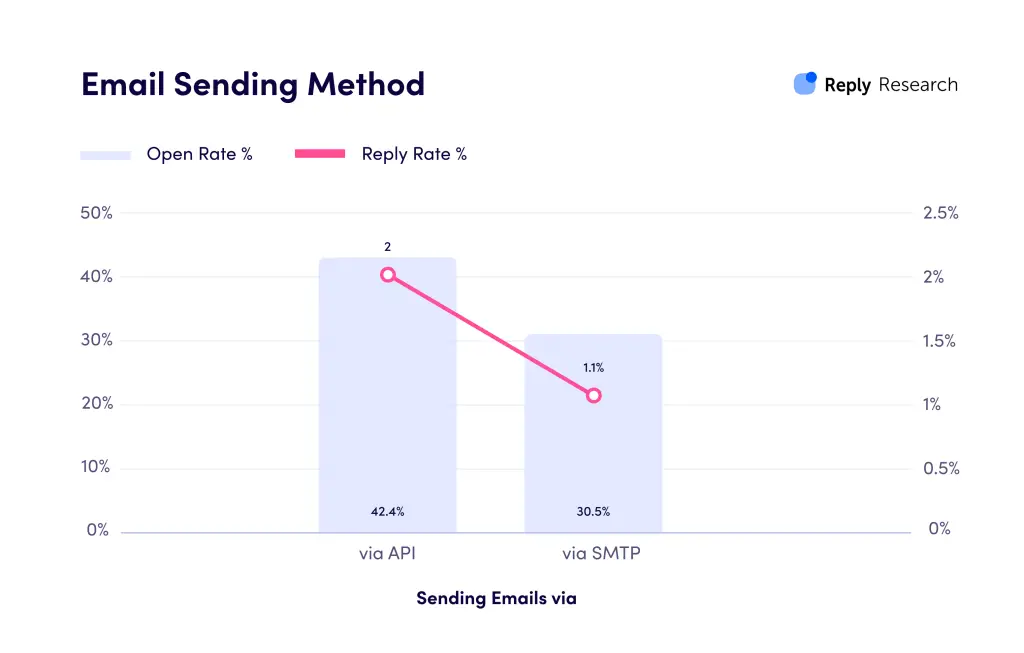SMTP vs. API for Email: Choosing the Best Solution for Your Business. Discover the differences between SMTP & API for email. Find out which solution suits your business needs best in this easy-to-understand guide!

<<<<< Buy Now from Official offer >>>>>
What is SMTP?
The Simple Mail Transfer Protocol (SMTP) is a standard protocol used for sending emails. It defines how email messages are sent between servers, making it the backbone of email communication. SMTP operates over a TCP/IP network, enabling the transfer of messages from the sender’s email server to the recipient’s email server. This process typically involves several steps. The sender’s email client connects to the SMTP server & forwards the email message. Then, the SMTP server processes the message & relays it to the recipient’s server.
SMTP works using port 25 for standard communication, while secured connections rely on port 587. Although SMTP successfully transfers emails, it does not handle email retrieval. That means protocols like POP3 or IMAP come into play for reading the emails. Many businesses use SMTP for sending bulk notifications, newsletters, & transactional emails. It offers a straightforward solution to integrate email functionalities into applications.
SMTP can be implemented through various email services. Common choices include Gmail, Outlook, & specialized providers like SendGrid, Mailgun, & Amazon SES. Each service provides its levels of reliability & additional features, which may influence your choice. Therefore, understanding how SMTP works & its potential advantages helps businesses streamline communication effectively.
Why Use SMTP?
Using SMTP offers several compelling benefits. First, SMTP servers are well-supported & easy to configure. Most web hosting services come with ready-to-go SMTP setups. You can send emails quickly without advanced knowledge. On top of that, SMTP is widely accepted. It works seamlessly with almost all email clients & applications.
Cost-effectiveness is another advantage. Most SMTP services are either free or come with affordable pricing tiers. For businesses needing to send emails in bulk, SMTP represents an economical option. Resources & tools for managing email deliveries are usually included.
- Compatible with many email clients.
- Cost-effective for bulk mailing.
- Simple integration with existing systems.
- Widely available server options.
SMTP also supports features such as email tracking, which allows businesses to see if their messages are opened or clicked. This is essential for measuring campaign success. While SMTP has many advantages, it also comes with limitations that can affect larger businesses or tech-savvy developers.
What is an API for Email?
Email APIs function as interfaces that allow applications to send & receive email messages. APIs stand for Application Programming Interfaces, enabling developers to integrate email functionalities directly into their web or mobile apps. APIs offer a more direct way to manage email compared to SMTP. With APIs, developers can send messages with a simple HTTP request, making the process more streamlined & efficient.
Email APIs are designed to handle various tasks. These tasks include sending, receiving, tracking, & validating emails. They often include advanced features like analytics, bounce handling, & user management. This leads to better performance & efficiency compared to traditional SMTP setups. Major email service providers, like Twilio SendGrid & Mailgun, offer comprehensive APIs tailored for developers.
Instructions for using an API usually involve obtaining an API key, crafting JSON requests, & interpreting responses. The ease of sending transactional emails & notifications makes APIs a favorite among developers. APIs also allow real-time communication & feedback, creating a more dynamic experience.
Advantages of Using Email APIs
Leveraging email APIs comes with multiple advantages. Data transmission is often faster compared to SMTP. Because APIs utilize RESTful designs, requests & responses fluidly navigate the web. This leads to quicker communications between applications & users. And don’t forget, the API architecture simplifies how applications send messages.
Integrating email APIs into applications allows for more control. Developers can create tailored solutions that match specific needs. For instance, automatic responses can be sent based on user actions. Customization options make APIs ideal for businesses needing more than just standard email sending.
- Rapid message delivery.
- Advanced tracking features available.
- Customizable workflows & templates.
- Real-time communication capabilities.
Another point worth mentioning is security. APIs usually come with built-in security measures, including token-based authentication. This is preferable for organizations handling sensitive information in emails. By using APIs, businesses can ensure that their data remains secure.
SMTP vs. Email API: A Direct Comparison
| Feature | SMTP | Email API |
|---|---|---|
| Configuration | Simple setup with standard libraries | Requires development effort for integration |
| Speed | Slower delivery rates | Faster message delivery |
| Tracking | Limited tracking capabilities | Advanced tracking & analytics |
| Customization | Basic email sending options | Highly customizable |
| Security | Basic security protocols | Enhanced security features available |
When weighing the option of SMTP vs. Email API, your specific business needs must come into consideration. If you need quick, customizable solutions with better tracking, then APIs are the best choice. Be that as it may, if your needs are basic email sending tasks & cost-effectiveness is crucial, SMTP could serve your interests well.
Use Cases for SMTP
SMTP remains a strong choice for certain scenarios. Businesses sending newsletters or promotional emails typically utilize SMTP. Its bulk emailing capabilities are cost-effective for companies that need to communicate with numerous recipients. It also works well for any business requiring simple email interactions, such as confirmations or notifications.
And another thing, small businesses or startups may prefer SMTP due to its ease of setup & sense of familiarity. Many developers have a background using SMTP. Therefore, they face less of a learning curve than deeper integrations with APIs. For businesses just starting their email marketing efforts, SMTP offers a straightforward starting point.
“A simple approach often yields the best results.” – Anna Smith
Another significant advantage is the versatility of SMTP. It can integrate with content management systems & website forms easily. For instance, a contact form can be set up to send inquiries directly to the business using an SMTP server without additional coding.
Use Cases for Email APIs
On the other hand, email APIs benefit businesses with more advanced needs. Tech companies might leverage APIs to automate customer support responses. For instance, an e-commerce platform could send out order confirmation emails instantly. APIs provide the efficiency needed for real-time communications.
And don’t forget, businesses focusing on analytics & performance metrics should consider using APIs. With APIs, developers can easily track email engagement metrics like open rates or click rates. This level of detail helps refine marketing strategies.
- E-commerce notifications.
- Transactional emails for services.
- Automated customer support responses.
- Personalized marketing campaigns.
APIs can also scale better than SMTP, handling higher email volumes without significant performance drops. Companies experiencing growth may find APIs essential for maintaining speed & efficiency. The ability to customize email flows increases flexibility significantly.
Cost Considerations for SMTP & Email APIs
Cost structures differ significantly between SMTP & email APIs. With SMTP, most basic setups are free, while premium plans offer additional features. This can be appealing for small businesses on tight budgets. Be that as it may, costs can increase drastically as email volume rises, especially if sending through third-party servers.
Email APIs usually operate on a pay-as-you-go model or tiered pricing. Although initial costs can be higher, this model allows businesses to scale efficiently. APIs typically come with bundled analytics, improving the value provided. Calculate the costs carefully according to expected email volumes.
| Service Type | Cost Structure | Best For |
|---|---|---|
| SMTP | Free plans available, increase with usage | Small businesses on a budget |
| Email API | Pay as you go or tiered pricing | Companies needing scalability & advanced features |
Look closely at both options when selecting an email solution. Your choice should align with operational needs & budget constraints. Solid research & planning will help make the best decision.
<<<<< Buy Now from Official offer >>>>>

Features of Emailit
Emailit offers a comprehensive suite of functionalities that cater to various email delivery needs. Below are the key features:
- Lifetime access to Emailit.
- All future updates included with the Pay-as-you-Go plan.
- License activation must occur within 60 days of purchase.
- Ability to upgrade or downgrade between five license tiers.
- No codes required, allowing users to select a plan that suits their needs.
- Support for sending via Rest API or SMTP.
- Webhooks included for seamless integration.
- Accessible Discord support for user queries.
These features enable businesses to find a reliable email solution while ensuring flexibility & efficiency. The ability to choose between Rest API & SMTP allows users to tailor the service according to their specific requirements.
Challenges of Emailit
Users of Emailit may encounter some challenges. One significant issue is the learning curve associated with using the platform effectively. New users might find it daunting to navigate through the features without comprehensive guidance. Some users have mentioned that the documentation lacks depth, making it challenging to utilize some advanced features fully.
Another challenge is the compatibility with legacy systems. Companies relying on older tools might face difficulties integrating Emailit without additional configuration. This can lead to delays in implementation, which can be frustrating for users awaiting a seamless transition.
Feedback from users often highlights these challenges. Suggestions for remedy include seeking out community forums, utilizing Discord support for immediate queries, & taking advantage of tutorials available on the website. Such resources can help mitigate the initial hurdles associated with adoption.
Price of Emailit
When considering the investment in Emailit, the pricing structure reflects flexibility tailored for various business sizes & needs. Below is a detailed pricing table:
| License Tier | Price |
|---|---|
| License Tier 1 | $39 |
| License Tier 2 | $59 |
| License Tier 3 | $159 |
This tiered pricing model provides businesses of different scales with access to relevant features. Selecting the right tier depends on company size & expected email volume.
Limitations of Emailit
Despite its features, Emailit does exhibit certain limitations. One common point raised by users is the lack of advanced analytics capabilities. While basic tracking is available, many businesses would benefit from more in-depth insights into their email performance.
And another thing, some users have reported difficulties when attempting to customize templates. Compared to competitors, Emailit’s template design tools may feel restrictive, limiting creativity & branding opportunities.
Lastly, Emailit’s response time for customer support issues can vary significantly. Users have expressed frustration when awaiting resolutions, particularly during high-traffic periods. Timely support remains a critical area for improvement.
Case Studies
Several businesses have successfully utilized Emailit, showcasing its potential. A small e-commerce store leveraged Emailit for their promotional campaigns. By using the Rest API feature, they automated their email triggers successfully, boosting their sales by 30% over three months.
Another case is a nonprofit organization that adopted Emailit for their fundraising efforts. The organization appreciated the ability to use webhooks to connect with their existing CRM. This integration allowed for personalized outreach efforts, increasing donor engagement rates significantly.
Finally, a tech startup managed to streamline its onboarding process for new clients through Emailit. The automatic email confirmations transformed their customer experience, resulting in higher satisfaction scores.
Recommendations for Emailit
To maximize the benefits of Emailit, users should consider establishing clear goals for their email campaigns. Setting specific targets can guide how they utilize the platform’s features efficiently. Utilizing segmentation within their email lists can also enhance personalization, leading to improved engagement.
Incorporating analytics tools alongside Emailit can provide deeper insights into campaign performance. Third-party tools can help analyze open rates & click-through rates to inform future strategies effectively.
Regularly reviewing & upgrading to higher tiers can provide additional functionality & support. Users should assess their email volume & corresponding needs consistently to ensure they are using Emailit to its fullest potential.
Features Comparison: SMTP vs API
When determining the best solution for email within a business context, understanding the differences between SMTP & API is pivotal. Below is a comparison that highlights the core differences:
| Feature | SMTP | API |
|---|---|---|
| Integration Difficulty | Easy to set up | May require developer resources |
| Flexibility | Less flexible | Highly flexible |
| Speed | Potential delays | Faster execution |
Benefits of SMTP
- Easy to implement on various platforms.
- Widely supported by most email clients.
- Reliable for sending bulk emails.
- Established standard for email delivery.
- Simple authentication process.
Benefits of API
- Offers advanced tracking capabilities.
- Provides better integration with applications.
- More control over sending methods.
- Supports complex functionalities & automation.
- Enables real-time data processing.
Choosing the Right Solution
Deciding between SMTP & API depends on various factors. Companies looking for straightforward, bulk emailing may find SMTP sufficient. Be that as it may, businesses seeking deeper integrations, advanced analytics, or automation should consider utilizing an API solution.
Considerations include the technical expertise of the team, the email volume, & the specific functionalities required for effective email marketing. Balancing ease of use with necessary functionality is key.
Ultimately, aligning the chosen email solution with business goals will enhance overall effectiveness. Continuous evaluation of performance & capabilities remains critical as the business evolves.
Final Thoughts on SMTP vs API
Both SMTP & API offer distinct advantages. Evaluating needs against operational capacity will guide users toward the most suitable option. Mastery of either tool leads to significant improvements in communication, marketing campaigns, & overall customer engagement.

What is the difference between SMTP & API for email?
SMTP (Simple Mail Transfer Protocol) is a standard protocol used for sending emails, while API (Application Programming Interface) offers a more flexible way for applications to send & manage emails programmatically. APIs can provide additional features, such as tracking & analytics, which are not always available with SMTP.
Which option is better for sending large volumes of emails?
API solutions generally provide better scalability & performance for sending large volumes of emails. They can efficiently manage & throttle sending rates, whereas SMTP may face limitations based on your server’s capability & configuration.
Are there any security differences between SMTP & API?
API solutions often come with stronger security features out of the box, including token-based authentication & encryption. SMTP can be secured using protocols like SSL/TLS, but it may require more configuration & maintenance to ensure safety.
Is it easier to integrate API or SMTP into existing applications?
Integrating an API is typically more straightforward because most APIs come with documentation & example code to help developers. SMTP integration may require a deeper knowledge of email protocols & server configurations.
Can both SMTP & API be used for marketing emails?
Both options can be used for marketing emails, but API solutions tend to offer more features tailored for marketing, like list management, analytics, & personalization, which enhance marketing efforts.
What are the costs associated with using SMTP vs. API?
Costs can vary. Many SMTP services charge based on the number of emails sent, while API services may charge based on usage, features, or a subscription model. Evaluating your email needs can help determine the most cost-effective solution.
How do deliverability rates compare between SMTP & API?
API solutions often provide better deliverability features, such as automatic bounce handling & improved sender reputation management. While SMTP can deliver emails effectively, API services usually have added capabilities to enhance deliverability.
What features should I look for in an API compared to SMTP?
When choosing an API, look for features such as real-time tracking, analytics, list management, recipient validation, & custom templates. These features can provide greater functionality than standard SMTP services.
Are there any specific use cases for SMTP?
SMTP is ideal for simple email sending tasks, such as transactional emails or notifications, where advanced features & analytics are not a priority.
Can I switch from SMTP to API later if needed?
Yes, you can switch from SMTP to an API solution later. Be that as it may, consider the migration process & ensure that your application can adapt to the change without significant disruption.
<<<<< Buy Now from Official offer >>>>>
Conclusion
When deciding between SMTP & API for your business email needs, it’s essential to consider what works best for you. If you’re looking for simplicity & wide compatibility, SMTP might be your go-to. Be that as it may, if you want more control & advanced features, an API could be the answer. Remember, the right choice depends on your specific requirements & resources. Whichever route you take, ensure that it aligns with your business goals & enhances your email communication. Make an informed decision, & you’ll be on your way to emailing success!
<<<<< Buy Now from Official offer >>>>>


